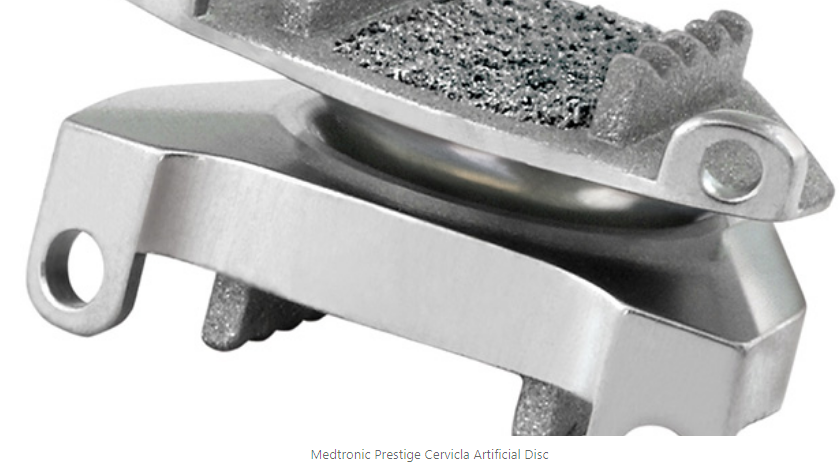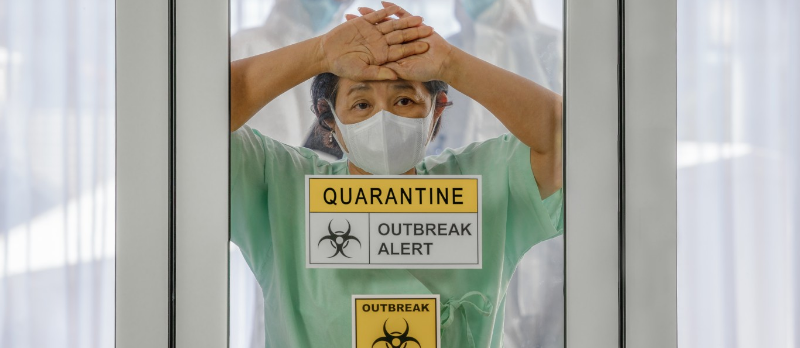
Should you have ACDF surgery or cervical artificial disc replacement?
Should you have ACDF surgery or cervical artificial disc replacement? https://phoenixspineandjoint.com/wp-content/uploads/2020/03/Medtronic-Prestig-Cervicla-Artificial-Disc.png 840 472 Phoenix Spine & Joint Phoenix Spine & Joint https://phoenixspineandjoint.com/wp-content/uploads/2020/03/Medtronic-Prestig-Cervicla-Artificial-Disc.pngOK. So you need spine surgery on your neck. The good news is that neck surgery today is safer, better, and less painful today than it’s ever been. As a surgeon whose performed thousands of ACDF surgeries, I’ve seen firsthand how it can really change your life for the better. But one thing that’s certainly true about neck surgery today is that you’ve got choices. Should you have the tried and true anterior cervical discectomy and fusion (ACDF), or go for the newer cervical artificial disc replacement everyone is talking about. It’s now artificial disc vs. Fusion. A new study really helps pick the right solution for you.
In the ten years since they became available, artificial neck discs like the Prestige from Medtronic (shown above) have become good alternatives to ACDF surgery. Newer? Yes. But are they really better? When a new technology comes out the FDA requires long term testing to make darn sure it’s safe, and at least as good as the thing it replaces. A new study of the Prestige tells the story of the first ten years for the brave souls who volunteered to try it out for the rest of us.
The big question ten years ago was why try anything new at all? ACDF is a very safe procedure, with a very low failure rate, a favorable patient satisfaction compared to other orthopedic procedures (see survey results in table below). However, nothing is perfect. First of all, nobody likes losing range of motion. The goal of ACDF surgery is to fuse one vertebral bone to another; that means the goal of ACDF surgery is to eliminate the motion at that level.
Patient Satisfaction after surgery:
| Procedure | Highly Satisfied (%) |
| Partial knee replacement | 94 |
| ACDF | 92 |
| Hip replacement | 90 |
| Total knee replacement | 74 |
It’s important to note that the US is not China, and things may be different here. First, we have the benefit of the Chinese experience; the information so far out of China indicates that the new coronavirus is much more like garden variety influenza than the much nastier virus like Hanta, Rabies, or HIV. Our National Institutes of Health Laboratories have extensive resources and capabilities at handling viral offenders. We have nimble, private companies like Gilead Science that are full of brilliant scientists who will work around the clock to develop a vaccine and explore the potential of existing medications to help those already infected. Our public health agencies like the Center for Disease Control have the best people in the world to assemble the data and give us advice. And last but not least, we can trust our media to faithfully transmit all the information out there that could help without censoring or hiding anything.
In addition, surgeons began to notice patients coming back years after ACDF surgery with problem at the level above or below. The bones of the neck are numbered 1 through 7. Let’s say a guy had ACDF at C5/6. Then he came back with a problem a few years later at C4/5. Since the 4/5 level is next to the 5/6 level, this was labeled the adjacent level problem. Was the ACDF surgery causing adjacent level breakdown and actually hurting people in the long run?
The cervical artificial disc was conceived to overcome these issues. Theoretically it could permit removal of the damaged disc in the neck while preserving motion, and avoid the adjacent level problem, but there were concerns about that approach as well. ACDF surgery results in fusion of the joints in the back of the neck secondarily; would the unfused joints at the level of an artificial disc still hurt? Also, orthopedic surgeons learned from the experience with hip and knee replacements that moving metal on metal implants create debris. That debris can be absorbed into the blood and cause circulating serum metal ions. That doesn’t sound good. Would these artificial discs make people sick? Yuck. And finally, everything that moves can break. Fusion is forever. Would the artificial discs all just break down and need to be replaced? Oy.
Fast forward ten years, and the results are in (JNS Spine, Cervical disc arthroplasty: 10 year outcomes of the Prestige LP cervical disc at a single level, 2019). First of all, we now know that cervical artificial disc replacement with the Medtronic Prestige relieves neck pain just as much, if not more, than ACDF surgery over a decade. People who tried Prestige were asked at years 2, 5, 7, and 10 how they were doing. They reported being just as functional, their neck pain relieved, and their arm pain resolved, if not more so than those who had ACDF. After ten years 92% of the people who had Prestige rated themselves completely recovered or much improved; ninety five percent were definitely or mostly satisfied with surgery; and 92 percent would do it again. Shucks, that sounds pretty good.
The main reason to have cervical artificial disc replacement surgery instead of ACDF surgery to begin with was to preserve range of motion. Did that happen? Yessiree Bob, it did. X-rays of people with Prestige bending their necks showed about six degrees of motion that were preserved compared to the people who had ACDF. Does six degrees matter? That depends on how you use your neck. If you’re really active, participating in sports like tennis, you need every degree you can get. Six degrees doesn’t change the view from the couch very much.
Most of the other concerns about cervical artificial discs turned out to be mostly smoke and not much flame. There was a slightly higher level of metal in the blood of people who had the Prestige, but not enough to make anyone sick. The Prestige really didn’t protect the adjacent levels like its inventors hoped: the likelihood of needing another surgery was about the same whether you had Prestige or ACDF. But on the other hand, they didn’t all fall apart either; after 10 years the Prestige held up nicely in the necks without mechanical failures. Could they all start breaking down in ten more years, twenty years after they were implanted? Sure. But thigs ten to fail gradually over time. If any of them were going to break down, some of them should have started to by now. And they haven’t. So, it it looks like few if any are going to.
The cost of cervical artificial disc replacement is generally the same as ACDF surgery. If you have insurance you will be required to pay whatever is left on your deductible, and co-insurance up to your out of pocket maximum. You can find out these numbers by calling the number on your insurance card, talking with your HR department, or we can certainly walk you through that here at Phoenix Spine and Joint. If you are not covered by insurance and are paying out of pocket for the procedure you can expect to pay between $12,000 and $40,000 depending on where you have it done. Our price is on a sliding scale, call us to find out how much it would be for you.
Recovery from cervical artificial disc replacement and ACDF surgery are about the same. To avoid hospital errors and infection, have the surgery in an Ambulatory Surgery Center and not the hospital. You will need to take a week if your job is light duty job, but up to twelve weeks off if you do heavy work like construction masonry. You’ll feel a lot better in a couple of days, ready to get back in the world after a week, and good to go in three weeks. Everyone gets a light cough, and has some trouble swallowing for a few days after the surgery, but both are usually gone within a week or two. No durable medical equipment is needed at home. Some patients take narcotic pain medications after surgery, but you don’t have to, and its definitely safest to avoid these addictive drugs if possible.
Well, when it’s all said and done, if you need neck surgery today, should you have the artificial disc or ACDF? There are some situations, like fractures and instability, where an artificial disc is not an option. For everyone else, if you’re over 55, or really concerned about your range of motion, and aren’t afraid to try something kind of new, then I would recommend an artificial disc. Everyone else should stick with old tried and true ACDF. The truth is, at the end of the day, both are really good options. And shucks, we’re lucky to have two good choices to begin with.
Considering spine or joint surgery? Contact us to get your questions answered and schedule your free second opinion teleconference with one of our doctors.
- Posted In:
- ACDF
- Cervical Artificial Disc Replacement







